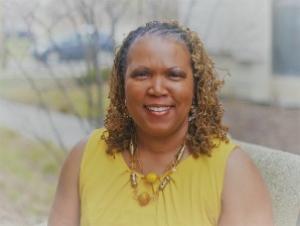Resources

There is a setting on Zoom which allows participants to blur their background. The individual is fully aware of the personal home, office, car, or other location. However, viewers on the Zoom line, if you will, have to guess or surmise the place behind the face. I know where I am. You are left to nebulously wonder. As professors we show up in the classroom, whether on campus or online, fully aware of how we are feeling. There are joys that call for jubilation and heartaches which weigh heavily. We know. We try to prevent our students from knowing. For the sake of pedagogical performance, we attempt to hide those morose monuments. In our teaching we make valiant strides to blur the burdens beckoning us back to bed. So that the language of hermeneutics, theology, religious studies, sociology, ethics, and pastoral care and counseling carry the day, we mute our emotions. There is a tendency to show up poised and put together when in reality we are a puddle of tears. We dare not permit a clear screen of pain and anguish. Thus, through an obscure framing we don a mask of dis-ease and discomfort. Since the onset of what is now the endemic presence of COVID-19, teaching has had to muddle through communal conundrum and global grief. I dare not aver that there was not such widespread distress before the pandemic: #BlackLivesMatter, #MeToo, the Civil Rights Movement, the Cold War, the Rwanda Crises, the HIV/AIDs epidemic, earthquakes in Haiti, and the Spanish Flu, to name a few, were all large scale crises that did not escape classroom discussions. These watershed moments continue to shape course content. Ours is an ancestry of crisis pedagogy with the purpose of trying to create progeny change agents. We cut our teeth on teaching while grieving. Recent events continue to prove fodder for our goals to mold social activists, social catalysts, justice leaders, pastors, counselors, and professors. Another mass shooting in the United States, a war in Ukraine, deadly earthquake decimation and demise in Turkey and Syria, and more deaths from COVID-19 appear antithetical to what we are trying to accomplish in the classroom. Ours is the task of nurturing persons who will love mercy, do justice, and walk humbly when it seems that yes, the world is going to hell in a handbasket. And yet, we continue to teach. #WePersist. A macrocosmic lens gives broad strokes. These we cannot blur, per se. However, the microcosmic, personal matters we want to keep at arm’s length. Ours is not the tendency to announce to our students news of a tenure and promotion denial or an article rejection. We swallow the agony of being an empty nester longing for our children as advisees demand the care we’ve reserved for our loved ones. Professors and administrators have struggled to be there for students when members of their own families died, lost jobs, and became ill due to COVID-19. This is the blurring. So what do we do? This was not meant to be a doom and gloom, woe-is-me writing exercise. I would like to encourage us, encourage me, to be more transparent. Imagine showing up in the classroom and honestly telling your students, “I am not okay today.” A statement of “I am struggling” from a professor could free classroom colleagues to relax, relate, and release. I am not saying everything needs to be shared, nor all the time. I also realize the potential maternal repercussions if I, a Black, cisgender, female professor, dare to be vulnerable. However, instead of blurring the background, how about allowing our emotional and tender forefronts to boldly manifest. In freeing ourselves, our classrooms can become a means to liberate our students. Our teaching task is to model the humanity of the profession. We do ourselves and our students a disservice when we obfuscate our dejection and obscure our despondency. I would posit that our mental health and wellness depend on our willingness to safely, openly unloose our stammering tongue. Teaching while grieving can make for fertile pedagogical ground. We grieve because we love. We grieve because we have lost what we love. May we honor the teaching, what we learn from grieving.

With the spike of mental health issues, and the fear, loss, and uncertainty students are facing in the middle of this coronavirus pandemic, connecting with students is critical. In some cases, life-saving. Yet, amid our transition to online teaching, the complete disruption of “normal,” and personal issues to deal with, creating a connection with students can seem prohibitively difficult just when we need it most. Can this time of crisis present an opportunity for us to be conduits of hope, assurance, and inspiration to students? In a time when students are fearful as they face unchartered territory, we can help calm their fears and encourage them, by sharing our own struggles and how we overcame them. Our personal stories of overcoming challenges communicate to students that everything will be ok—that they will make it through this dark time. When my institute, Palm Beach Atlantic University, responded to our county order to close the campus, many students were distressed and scrambling to find a new residence. Seniors felt great loss as the reality sank in that they may not see their roommates, classmates, or professors again, and that there would likely be no graduation ceremony. How could I reassure and comfort the class? In our live conference, I talked about my own struggles. I began by admitting that I had uncertainty—I couldn’t yet answer most of their questions about residence, graduation, or internships. I disclosed that for me this pandemic had triggered memories of a trauma I experienced several years ago and had heightened my anxiety, and that with the world “falling apart,” I, too, was finding it hard to stay focused and motivated. I added, with a bit of humor, that the most stressful item keeping me awake at night was fear of running out of toilet paper and diapers for my baby! (Focusing on the minute is a typical response to trauma.) Then, I shared the story of when I survived a near-death experience and a difficult recovery. I made it through, and in the end, I was much stronger for it. Sharing our struggles builds immediate rapport with students. They realize that we’ve lived through hardships like theirs. We survived, and so will they. Our times of crisis—whether relational, health, financial, or otherwise—built our character, made us wiser, helped define who we are today, and revealed that we were stronger than we thought. This is a message that our students need to hear! It’s risky and humbling to share the story of one’s trauma or hardships, but our vulnerability creates a safe space that invites students to respond with openness and honesty. Letting students get to know us provides the personal connection that increases student learning. This atmosphere of student learning and engagement is vital for our current online settings. How can you connect to students in your online classes? Here are some practical suggestions: Create time and space in your class for connecting. Set aside the first few minutes of class time (or a conference) to give the students an opportunity to discuss how they are doing. It doesn’t need to be emotional or drawn out—you can say, “We only have a few minutes, so just take just a few seconds each and let us know how you are doing.” Assure them that it’s fine to be “great” as well. Jot down any major issues. Follow up with those students when the class is next together—perhaps invite them to give an update. (Remembering their comments and following up is a powerful demonstration of a truly caring professor!) These few moments provide insight into how the class is doing overall and can help you know their learning needs. Tell the students you support them, you care about them, you are thinking about them. These simple words can be life-giving—assuring the students that they are not alone. Remember, many of our students lack positive role models and a support network. You might be the only voice of reassurance and comfort to your students in this time of crisis. Communicate to the students that you understand and can relate to the struggles they are facing. This has never been easier because we actually are facing the same issues! Share some of your own difficulties in working off campus, changing your routines and schedule, and needing to stay isolated. Create a venue for students to share with one another and support each other, such as a discussion group. Have you connected with your students in other ways online? Please share below.

Students are in crisis. How can they keep up with their academic life when the pandemic has all but assured that their personal and emotional lives are experiencing some measure of turmoil or trauma? The novel coronavirus has upended every area of society. There is no sector of public or private life that it has not affected. Faculty at institutions of higher education have been reeling from figuring out how to transform their in-person classes into a virtual format in the blink of an eye. On the other side of these virtual classrooms, students are themselves reeling from all of the changes. Professors are telling stories of students flooding their inboxes with messages expressing anxiety, an inability to focus, and an inability to keep up with their assigned work. As a result, many realized that students are carrying so much emotional and psychological distress that they need professors to be sensitive and mindful of their circumstances outside of the classroom. Without a doubt, they are right; students are drowning and they need faculty to throw them a lifeline. Professors are seeing that they need to “shift gears” to exclusively online formats and shift their expectations and requirements for students. Higher education in the age of the Covid-19 has professors making changes that are sensitive to what is happening in the students’ lives outside of the virtual classroom. Many have taken their cue from those like UNC-Chapel Hill Professor Bandon L. Bayne who made headlines after he amended his own syllabus and expectations for his students when classes were forced to go entirely online. Bayne explained that he discovered that his students not only had “a whole range of differential access to material,” but also that students were all treading water trying to navigate their own anxieties about the pandemic and their varying family and life contexts. Thanks to the pandemic, many in higher education are realizing what has always been true--that they must keep in mind the whole student when teaching. They are learning that teaching during a pandemic means that being an educator entails more than pedagogy, it includes structuring classes around the premise that student circumstances outside of the classroom have a direct impact on their ability to navigate the classroom and to meet classroom expectations and requirements. Faculty are learning that this was always the case, even in the pre-pandemic world of higher education. In our current Covid-19 world, many rely on the Centers for Disease Control (CDC) for guidance and updates about this relatively unknown virus. Yet, the reality is that the CDC had already warned of a public health issue that has a direct impact on the functioning of students in higher education before they ever heard the words “Covid-19” or “coronavirus.” In November 2019, a few months before Covid-19 began spreading across the globe, the CDC declared trauma a public health issue. Additionally, before the CDC made this declaration, faculty across disciplines were seeing college students navigate what seemed like ever-increasing mental health crises. Increasingly, students have been dealing with mental health barriers coupled with rising rates of mass gun violence and campus sexual assaults. Experts have long suspected that many college students carry the effects of childhood trauma well into adulthood, in addition to having to navigate the challenges and realities of modern college life. Many of us who teach in higher education can testify to this pre-pandemic reality. We have known students whose educational experiences have been marred by mental health crises. Many bright and promising students are forced to forgo their educational pursuits in order to tend to untreated and unresolved trauma which commonly manifest themselves during the college years. Other students may not forgo their educational pursuits, but lean on maladaptive coping mechanisms or sacrifice the quality of that educational experience with an academic performance that is not indicative of their ability. These are all pre-pandemic realities. As a result, the needs of students during this pandemic is teaching educators to always be mindful of students’ circumstances outside the classroom in order to educate the whole student in the classroom. The students of this pandemic are tasked with more than meeting the expectations and requirements of the classroom (virtual, or otherwise). In this respect, while everything has changed, nothing has changed.